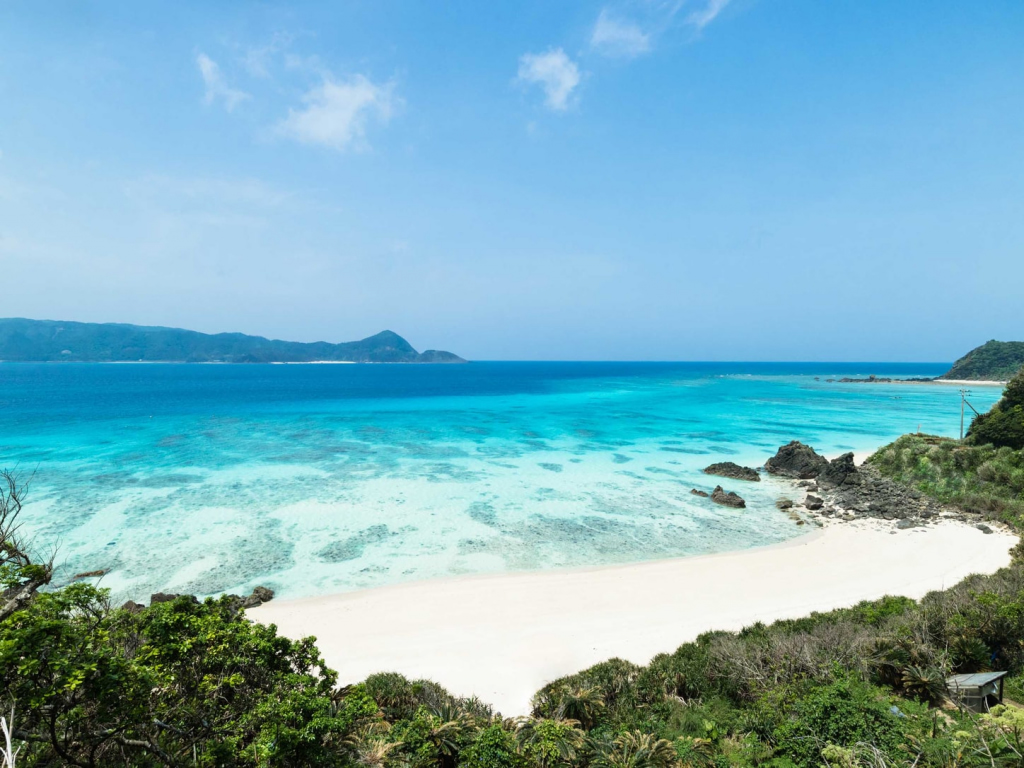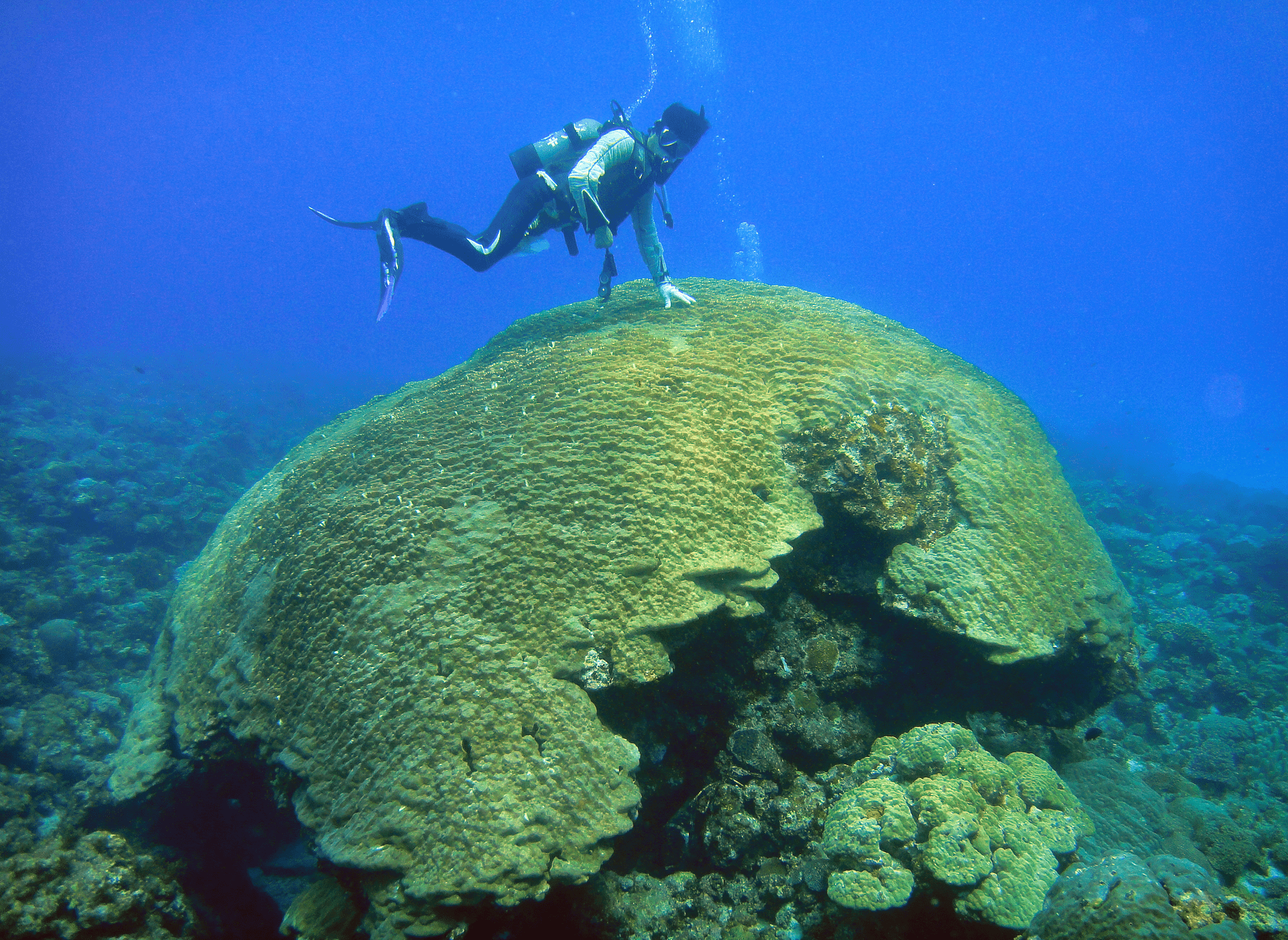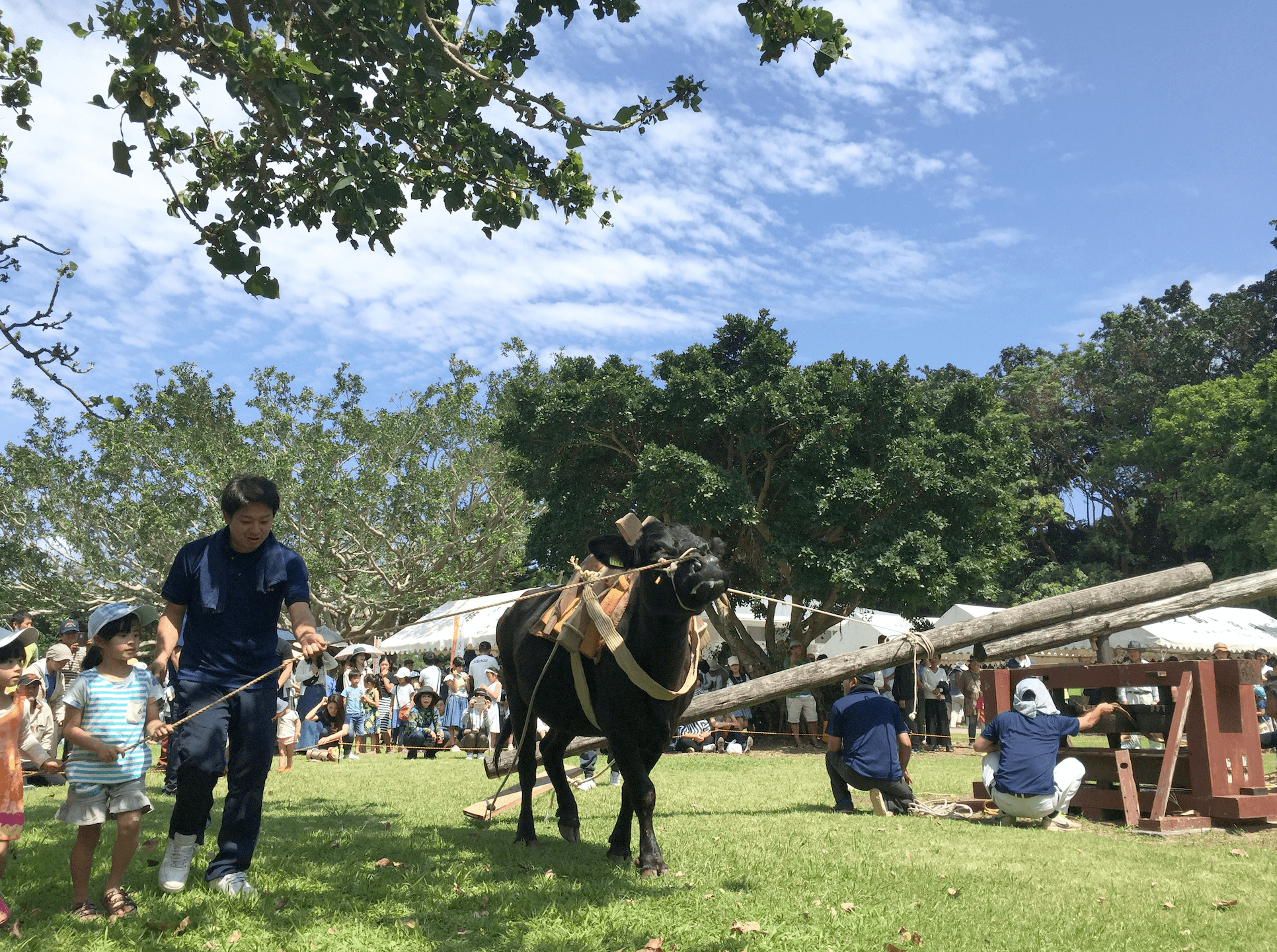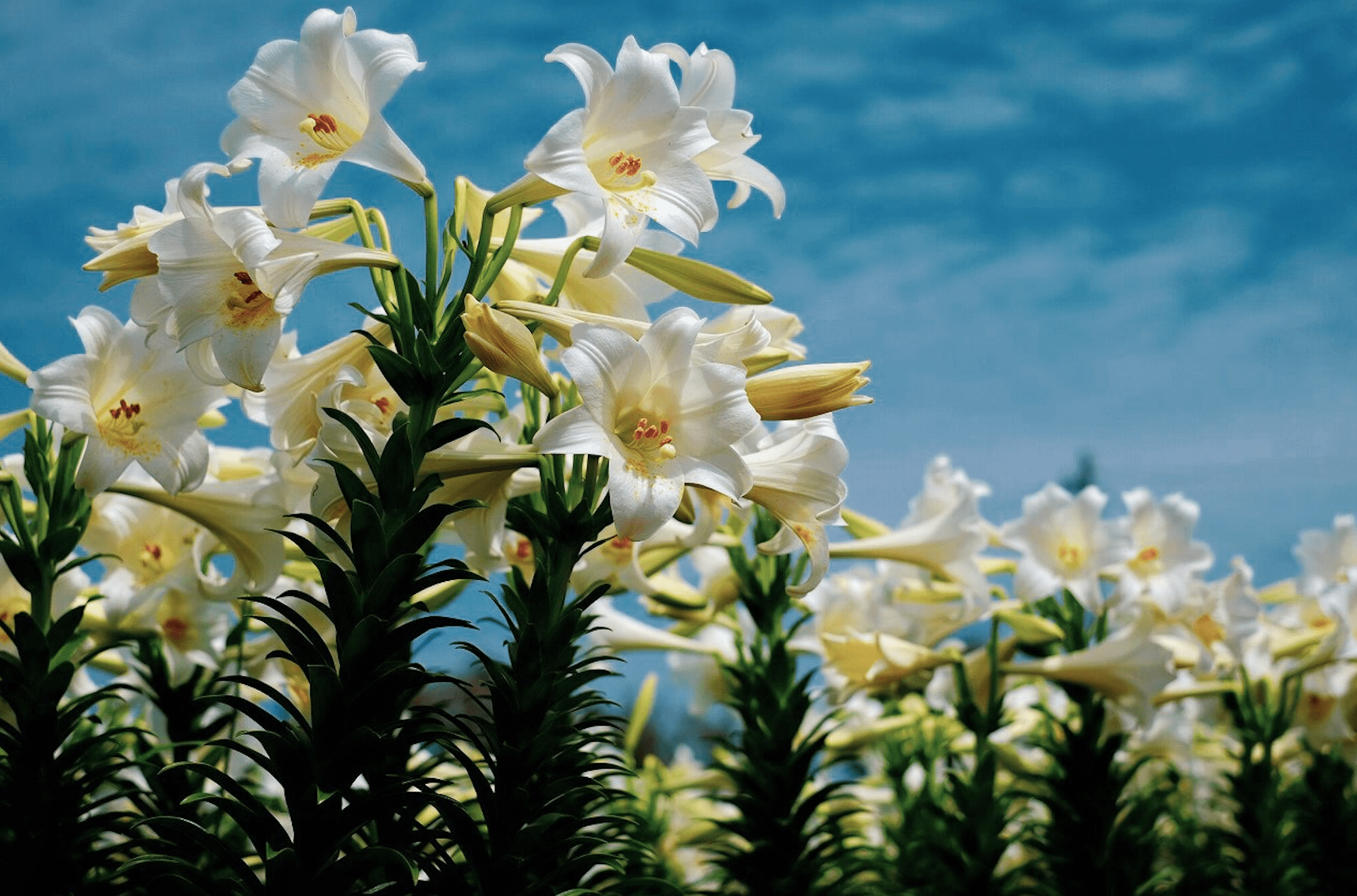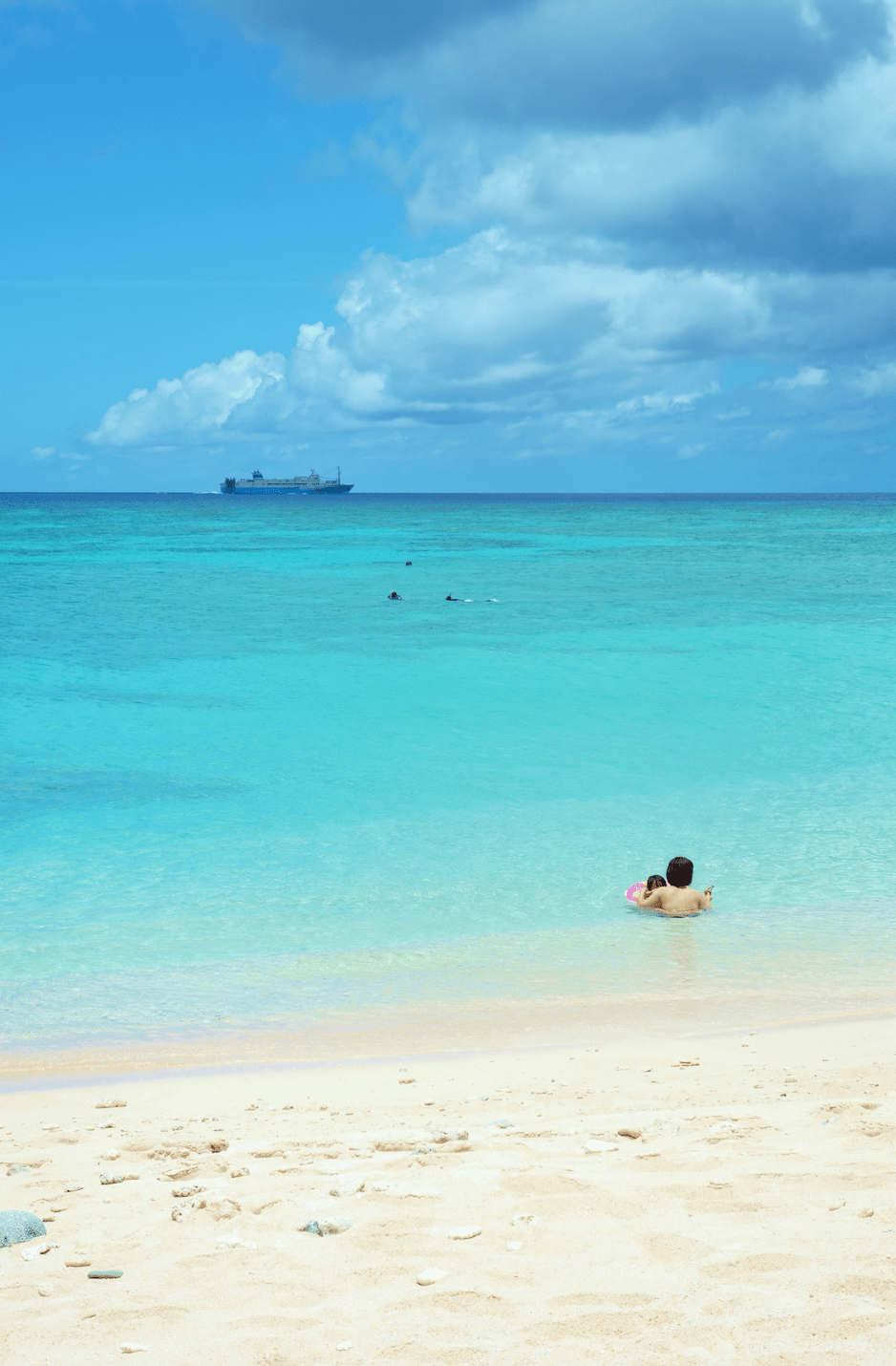If you thought you had to leave Japan to find white sand beaches, amazing scuba diving destinations and deep cultural experiences, then think again. Set sail to Kagoshima Prefecture’s Amami Islands to find Japan’s most beautiful shores. The five main islands of the archipelago differ in character and topography – which one is closest to your idea of paradise?
Amami Oshima: A Balance of Nature and Tradition
Amami Oshima, the largest and most developed of the five main islands, has plenty to offer culture buffs and nature lovers alike. Art aficionados should head to the Tanaka Isson Memorial Museum of Art first, which is only a short drive from the airport. It’s on the grounds of Amami Park, a cultural center with nature and local history exhibitions that offers insight into traditional island life.
Tanaka was originally from Tochigi Prefecture, but moved to Amami Oshima in 1958 at age 50. His art, a form of Nihonga, vividly portrays the rich natural landscapes of Amami and is seldom shown elsewhere despite its unique style and subject.
For a more hands-on cultural experience, Oshima Tsumugimura offers weaving demonstrations of the island’s traditional silk pongee kimono. Oshima tsumugi dates back over 1,300 years and uses a mud-dye method to create subtle but elegant patterns. Visitors can wear kimono, make their own mud-dyed tees, and find souvenirs among the locally handmade accessories.
As for nature, Amami Oshima (together with Tokunoshima, the northern part of Okinawa Island and Iriomote Island), received UNESCO World Heritage designation in 2021 for its diverse fauna and rich foliage, which includes both rainforests and mangroves. Visit between December and March for a chance to spot humpback whales cruising along the coast.
Amami Oshima Tourism Info: amamikke.com/basic_en
Kikaijima: Unique Sights on Land and Underwater
Kikaijima has the honor of being Japan’s largest producer of white sesame seeds – a vital component in Japanese cuisine. Sesame is sown in May and harvested from July to September. During the harvest season, a literal Sesame Street appears: Sheaves of sesame plants are lined up along stone walls to dry in the sun, creating a picturesque scene found nowhere else.
Kikaijima is also one of only three places in the world with unobstructed views of coral reef terraces. It is the second-fastest growing elevated coral reef island and grows taller at an average rate of two millimeters a year. From the hills of Tebaru Banta you can see a monolithic coral reef terrace that rises high above the land around it, demonstrating a 100,000-year timeline of geological history visible to the naked eye.
Last but not least, the ocean surrounding the island is a diver’s paradise with an abundance of sea creatures and untouched coral. A massive colony of porites coral was recently discovered, measuring about five meters high and 15 meters in diameter. It is estimated to be over 440 years old and may be the largest of its kind in the world.
Kikaijima Tourism Information: kikaijimanavi.com
Tokunoshima: Fun ‘Til the Cows Come Home
To say that Tokunoshima islanders are crazy about cows would be an understatement. Island life still revolves around the traditional sport togyu (bulls’ sumo), a custom that has been woven into the fabric of daily life for around 400 years. Events are rare, but the atmosphere is electric as everyone cheers on their favorite.
In the ring, two bulls are pitted against each other, with the battle ending when one tires and gives up. Handlers swoop in as soon as one turns away to ensure the safety of both the bulls and the audience. Out of the ring, these heavy beasts are gentle giants, pampered by their owners and considered an extension of the family unit.
Social events often take place near the bull stable and it’s not uncommon to see people go for walks with their bulls after work in the evening. Since January 2020, several farmers have opened their doors to visitors to allow them to learn about this ancient custom and its place in modern island life. Play farmhand for a while and take care of one of Tokunoshima’s most precious jewels by feeding them sugar cane, or parade them around town.
As most farmers speak little or no English, an Amami Islands Area Licensed Guide Interpreter can help make the most of your bovine experience.
Tokunoshima Tourism Association: www.tokunoshima-kanko.com
Bull Farm Experiences: fukumoto0421.wixsite.com/tougyu
Amami Islands Area Licensed Guide Interpreters: www.amami.or.jp/guide_en/category/interpreter/trans_tokunoshima/
Okinoerabu Island: A Floral Paradise
Okinoerabu goes by many names. Often shortened to Erabu by locals, it’s also nicknamed Pancake Island – a reference to its flat coral reef structure that is similar to Kikaijima’s – and given the well-deserved moniker “island of flowers.” While flowers do seem to bloom all year round here, the island’s most notable export is the Erabu lily – or Easter lily, as most will know it. It blooms at the end of April to the beginning of May, creating seas of bright white and green waving in the breeze.
The lily has an interesting history – as a poisonous flower, it was long discarded in favor of essential edible crops. However, in 1898 an Englishman by the name of Isaac Bunting drifted ashore and changed the fate of Okinoerabu Island’s inhabitants forever. With his help, the locals created an industry surrounding these precious bulbs – one that still exists to this day.
1898 was a big year for the island, as it was also the year the gajumaru, a big banyan tree, was planted outside Kunigami Village School. Today it’s one of the largest banyan trees in Japan; although it’s only seven meters tall, its trunk is seven meters wide and its branches reach up to 22 meters long.
Visitors who want to get a taste of Okinoerabu’s abundant plant life up close should stay at Kochinda Hotel, a quiet boutique hotel in the town center enveloped in greenery, or Shimayado Atari, an exclusive traditional house that only accommodates one group of guests per night.
Okinoerabu Island Tourism Association: www.okinoerabujima.info
Yoron Island: A Cornucopia of White Sand Beaches
The last of Amami’s five main islands is the smallest. Yoron Island is closer to Okinawa (the north part of Okinawa’s main island is visible from Yoron’s Southern Cross Center on clear days) than Kagoshima Prefecture and it feels completely removed. Despite the island covering barely 20 square kilometers, it has almost 60 pristine white sand beaches.
Since the island is so small, most of the beaches are easily accessible by bicycle. Yurigahama, Yoron Island’s most famous draw, however, requires ocean transport. This popular sandbar only appears in spring to autumn at low tide and is a unique way to experience the island’s crystal clear waters. The best way to reach it is by taking a glass-bottomed boat tour there, as the guides will know the best time to go and will do a detour to explain the ocean animals visible along the way.
For a break from the beach, head to the Akasaki Limestone Cave, a 120-meter-long coral cave that has been eroded by groundwater for hundreds of thousands of years. Just a stone’s throw away from here is Yoron Folk Village, a small museum with local craft experiences.
Yoron Island Tourism Association: www.yorontou.info/en
How to Get There
By Sea
Take the ferry from Kagoshima or Okinawa and travel between the islands at your own pace. It takes longer, but it offers some amazing ocean views along the way.
Marix Line can be booked at www.aferry.com/marix-line-com.htm
A”Line Ferry travels from both Kagoshima and Okinawa to the islands.
www.aline-ferry.com
By Air
JAL has daily flights to Amami Airport from Haneda, Itami, Fukuoka, Kagoshima, Naha and other airports. There are daily services between the five islands. www.jal.com
Peach flies from Narita directly to Amami Airport daily. www.flypeach.com/en
Good to Know Before You Go
Climate
The Amami Islands has a subtropical climate with mild winters and hot summers. The rainy season lasts from May to June. Typhoon season depends on the year, but generally August and September see the highest number of typhoons. As with many islands, the weather can hit harder in the Amami archipelago. Be prepared for delays if it’s windy or there is heavy rain.
More Resources
Amami Archipelago Tourism and Products Association: goontoamami.jp
Amami International Network of English-speaking guides: amamiguide.co.jp
Sponsored Post

